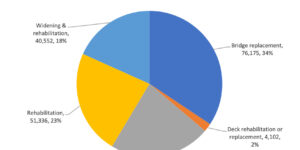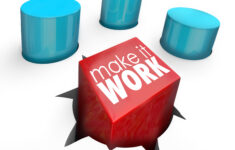You’re either a fountain or a drain. Funny thing is, you’re not born that way. It’s a choice you make each day when you wake up.
Executive Summary
There are two types of people, writes Guest Editor Don Bailey: fountains and drains. The first is filled with positivity, hope and purpose that inspires others. The second depletes others’ resources by focusing on negative thoughts and emotions.How do you tell which a person is? Take an inventory of how that person makes you feel.
Does he talk about himself all the time, leaving you feeling unimportant? Does she complain about everything, causing you to harbor your own negative thoughts or leaving you emotionally exhausted? Does he blame his failures on bad luck, or worse, everybody else? Does she make you feel worse about yourself or your own situation? If the answer is yes, you’re looking at a drain.
Does he greet you with a big smile when he sees you and ask, “How are you?”—and really mean it? Is she unfailingly positive, making the future seem brighter to you? Does he look for every opportunity to help others and never take credit for anything, leaving you in awe of his selflessness and inspiring you to be the same way? Does she take charge of her own life, no matter what comes her way, believing in her heart that it’s all within her control? You’re talking to a fountain.
Fountains are full of purpose, optimism and confidence. They overflow with it. They cannot prevent their joy from spilling into the lives of those around them. They fill others up. Drains, on the other hand, deplete others’ resources by being focused on their own unquenchable chasms of doubt. They are often unaware of their draining effect on others.
At this time, our mindsets are the battleground for our well-being. And so much of our mindset is determined by those around us. Drains lead us down a dark spiral of thoughts. Fountains keep us optimistic and in the moment.
Allow me to make this a little more real.
One morning a few years ago my phone rang at 6:30. At that hour, it’s rarely good news. My trusted colleague Jim had died. At 7:00 that same morning, the phone rang again. More bad news befitting the hour: Larry had just resigned to join a competitor, taking 15 of our employees and a number of our largest clients with him.
Jim was a fountain, Larry a drain. Jim was a beautiful man, a joy to be around and all the more powerful because of his subtle grace. Larry was just the opposite: a vortex of negativity and self-involvement that left everyone around him emotionally spent.
Water is common to both fountains and drains. It’s an amazing thing, water. It’s life-sustaining, psychologically soothing and mentally stimulating. Water also enhances life—there’s a direct correlation between clean water and economic prosperity. Water is more essential than even food; we can survive only three days without it. And, as Ishmael reflects in “Moby Dick,” water’s shimmering presence pleases our eye and soothes our soul. That’s why real estate near water is so expensive and why vast sums of money are spent, publicly and privately, on reflecting pools, fountains, waterfalls, ponds and other bodies for the sole purpose of aesthetic enjoyment. Personally, nothing calms me more than sitting by a lake.
Ironically, water is also a killer. Floods, tidal waves, tsunamis and storm surges regularly wreak havoc on lives and property. Even in its most benign forms, water can envelop and suffocate.
People are just like water.
The Fountain
Jim and I worked together. I was the CEO of a North American business with 4,000 employees, and Jim was a senior consultant in our largest industry practices. The major firms in the world sought Jim out for his advice on their most complex risk and insurance issues.
While his reputation for technical excellence preceded him, that’s not what people remembered most about Jim after their first meeting. It was what radiated from within him: a relentlessly positive world view married to a genuine joy discovered in serving others, all delivered with the bedside manner of a kind and warm country doctor. Jim was a devoted husband and father who also considered his community part of his family—he was deeply involved in a number of charities. Jim was one of those guys you wanted to be around. He made you feel better about everything. I would have loved to have him as a neighbor and daily presence in my life. With Jim, it was never about him.
I took it hard when I learned about Jim’s cancer. Everybody did. We all immediately rallied around him, though, as he had done for countless others. But in typical Jim style, he would have none of it—no furrowed brows, hushed tones or sad laments. He ignored the cancer ravaging his body to stay focused on what mattered most to him: everybody else. Sitting in his hospital bed, Jim spent his days figuring out how he could still help his clients and colleagues with their issues, reassuring us all along the way that he was just fine. I remember talking to him one time in the hospital. I kept asking him about him. And each time he would artfully redirect the conversation to how I, as CEO, could help one or another of his clients or associates. It was frustrating but also riveting.
I kept thinking to myself, is this some Gary Cooper act, or is this guy really that selfless? It was no act.
It’s obvious why I call Jim a fountain. He springs eternal, like hope, even in death. What’s not so obvious is that at some point in his life, Jim made the decision to be a fountain. He made a conscious decision to dedicate his energy to increasing the energy of others. He didn’t need to jockey for personal recognition. Instead, he would help. He would encourage. He would advocate for people and causes.
We’re not genetically pre-programmed to be a fountain or a drain. We decide—every day.
The Drain
Larry was a salesperson and account executive for us, what’s called a “producer” in the insurance trade. But that’s not what he originally was hired to do. When he first joined our firm, his job was a highly technical one with far less status and money associated with it. Larry was in luck, though. A seasoned hand and generous soul decided to take him on as a project and, Pygmalion-like, taught him everything he knew and introduced him to all of his clients.
Larry was ambitious and applied himself, parlaying his mentor’s training and his own growing experience into a few promotions over the ensuing years, eventually rising to producer and team leader. Unlike Jim, the fountain, no one above him ever doubted that Larry was in it only for Larry. He had become a well-trained insurance professional, but he was still a drain. He had made the opposite decision from Jim at some point in his life.
OK, so Larry resigns. Why should I care? You’re thinking good riddance, right? Well, not exactly. We taught him the ropes, handed him a roster of clients and paid him substantially for it. Recently, Larry had been grumbling more than usual even for him, so a competitor’s attempt to pay Larry tons of money to bring his clients and people to their firm wasn’t unexpected.
What was a surprise, however, is that so many of “his people” were actually thinking about leaving with him. They obviously didn’t see what I and so many others did: that Larry was in it only for himself. “His people” were merely chess pieces he needed to move to help lure clients away. They didn’t know that Larry’s success to date hinged on draining resources, energy and credit from people like them. Larry’s drain-like behavior had become his lifelong default setting.
Back to that morning. I received the call on Jim’s passing at 6:30 a.m. Thirty minutes later, I got the call about Larry. In the insurance brokerage business, like a lot of professional services, raids like Larry’s aren’t that uncommon. That’s because the people themselves, not the company, are often considered to be the more relevant and valuable brand.
I’d been here before, so I knew exactly what to do. We immediately went to the “burn the house down, shoot the dog” strategy (apologies for the harsh metaphor, but that’s what we called it); in other words, we fought back fast and hard. We had no choice—we were a public company and had to protect our revenues and the franchise value of our business.
So, we went after Larry with every legal strategy and business tactic imaginable. We weren’t playing defense; we were playing offense. From the time I received that early morning call until 8:00 that night, we battled Larry on every front. I felt like Norman Schwarzkopf leading the forces of Desert Storm, and, like his army, mine was well trained, executed its mission impressively and secured a swift victory. After Day One we had succeeded in keeping our people and clients in the face of Larry’s insurgency.
I felt really good, until many hours later when I remembered Jim. Then I felt like a heel. I had allowed my mindset to be dominated by a drain.
For 13 hours, I hadn’t thought about Jim once. I had devoted all of my time and energy to dealing with Larry, the drain, when I should have been thinking about Jim, the fountain. So, in a way, Larry won our Day One skirmish. He had managed to distract me from doing the most important thing I should have been doing that day: remembering Jim. Calling his family, honoring him, creating ways to make sure Jim’s legacy would never be forgotten—I did none of that. Instead, I watched water go down a drain.
 Becoming a Fountain Is a Choice
Becoming a Fountain Is a Choice
I resolved in that moment to make better choices about where to devote my precious mindset. It’s way too easy to get caught up chasing life’s drains. For whatever insidious reason, they’re incredibly effective at drawing us in. They sap our time, energy and emotion. In a cruel twist of irony, they end up draining us. They make us feel bad about ourselves. Even worse, the more attention we pay to life’s drains, the more they seem to find us.
I’m pretty sure we’re all guilty of focusing more on our problem employee than our star performers. It’s much harder to devote your time to the fountains in your life, but it’s critical that you do. Fountains are life affirming. They make us feel better about ourselves. They energize us. Self-doubt vanishes when we bathe our mindsets in fountains.
Try this exercise. Grab a pencil and paper. Make two columns. Label one “Fountains” and the other “Drains.” List all of the important and influential people in your life in the proper column. Don’t forget yourself. Which are you? Where do the other people fall on the list?
If you’re being honest with yourself and are a drain, make the decision to immediately switch teams. At the same time, make a conscious commitment to embrace the fountains in your life. Spend more time with them. Take the time to go out of your way to meet new fountains. It will make you happier and an all-around better person.
As for the drains, if they’re important people in your life, at least give them the gift of honesty and help them understand the negative effect they’re having on you and others. Sometimes you just can’t walk away from the drains in your life, but you can certainly limit your exposure to them if they’re not willing to change. For the drains you can do something about, figure out your best exit strategy and beat a hasty retreat. Otherwise they’ll suck the life out of you.
Thanks to Jim, my mindset is set positively each day. I’m spending lots more time with the fountains in my life. I made a conscious decision to run from the drains. It required a lot of forethought, planning and careful execution, but I did it. What’s more, I’ve taken my own advice and have discovered new fountains. As it turns out, fountains really like hanging out with other fountains! It’s amazing what you can learn in a day.
As we all find our way during this crisis, our mindsets will determine how we come out of this. The Fountain Mindset will serve you well. It will compel you to remain in the moment and propel you to come out this better than you went in.
Dedicated to Jim Maloney. RIP.






















 New Hampshire High Court Invalidates GEICO Underinsured Claim Provision
New Hampshire High Court Invalidates GEICO Underinsured Claim Provision  Allstate Thinks Outside the Cubicle With Flexible Workspaces
Allstate Thinks Outside the Cubicle With Flexible Workspaces  Cyber Crime Climbs, 90% of Americans Have Been Targeted
Cyber Crime Climbs, 90% of Americans Have Been Targeted  Retail Workers Consider Quitting Due to Safety Concerns Ahead of Holiday Shopping Season
Retail Workers Consider Quitting Due to Safety Concerns Ahead of Holiday Shopping Season 










